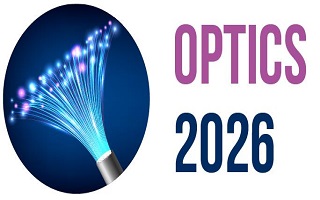3rd International Conference on
Optics and Laser Technology
October 29-30, 2026 | Berlin, Germany

Optics 2026

Faculty of Chemistry, National Autonomous University of Mexico, Mexico
Abstract:
Currently, lanthanide ion coordination compounds are used in lighting technology, screens, money safety marks, and light phosphor converters. They present photoluminescent properties, with fine emission bands unaffected by their chemical environment. [1-3] Lanthanide ion´s emissions can be improved by coordinating them to a chromophore that absorbs energy and transfers it to the ion, thus enhancing luminescence. This ligand acts as a sensitizer (antenna effect).[4] Previous reports indicate that Salphen derivatives and their d-block metal coordination compounds may enhance lanthanides’ emissions. However, only Schiff-base coordination compounds with closed-shell d-block metals such as Zn2+ and Cd2+ have been used. [5-10] Coordination compounds containing ion metals like Cr3+ and Co2+ are dark materials due to charge transfer bands absorptions that may quench luminescence. We observed that salphen d-f (Co2+-Ln3+) hybrid coordination compounds display luminescence in solution or a solid dispersion. The thermal stability of the compounds above 200 °C and their photoluminescent properties could make them suitable for light phosphor conversion on LED technology.
Biography:
Adrian Olvera Nolasco obtained his B. Sc. (Chemistry) in 2018 and completed the M. Sc. (Chemistry) in 2021. He is pursuing a PhD in Chemistry at the Universidad Nacional Autónoma de México.
